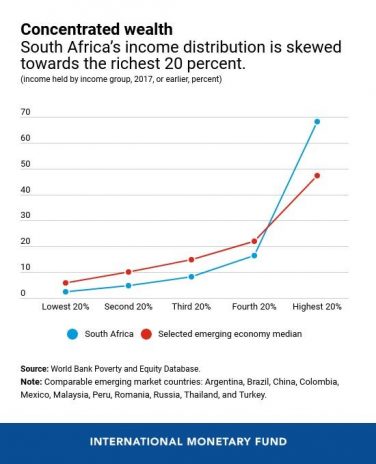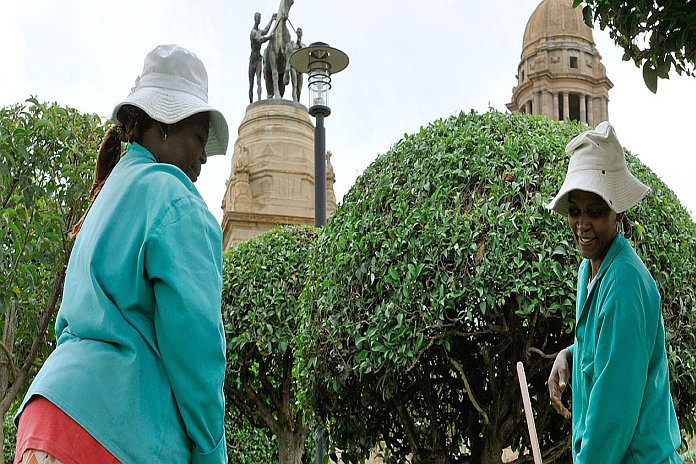By IMFBlog
South Africa suffers among the highest levels of inequality in the world. As our chart of the week shows, the country’s wealth is concentrated in the upper levels of society. The top 20 percent of the population holds over 68 percent of income, while the poorest 40 percent possess only seven percent of income.
That inequality isn’t only seen in income distribution; it also manifests itself in unequal access to opportunities education, health, and jobs—and regional disparities. Meanwhile, low growth and rising unemployment have perpetuated inequality. High unemployment is a major factor. South Africa’s unemployment rate is significantly higher than other emerging markets, and nearly 60 percent of the country’s youth (aged 15-24) are unemployed.

South Africa started the 1990s with already elevated inequality as the policy of apartheid excluded a large swath of the population from economic opportunities. South Africa’s Gini—an index that measures inequality has increased further in the early 2000s and has remained high ever since. Meanwhile, its peers have made inroads in reducing inequality.
The South African government has used different tools to tackle the stubborn levels of inequality, including through progressive fiscal redistribution. Efforts to reduce inequality have focused on higher social spending, targeted government transfers, and affirmative action to diversify wealth ownership and promote entrepreneurship among the previously marginalized. Rising debt is reducing the scope to further use fiscal policy for redistribution.
In the future, existing measures will need to be complemented by reforms that promote private investment, create jobs, and foster inclusive growth if South Africa is to bridge its great income divide.
![]()





